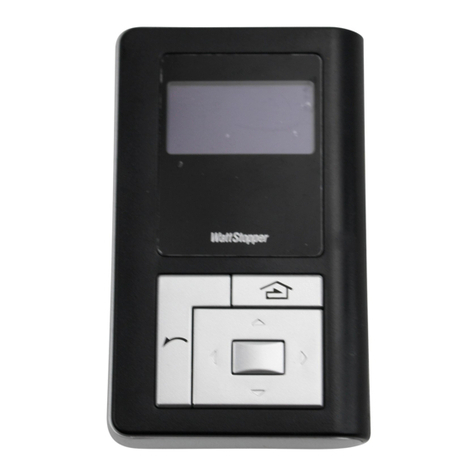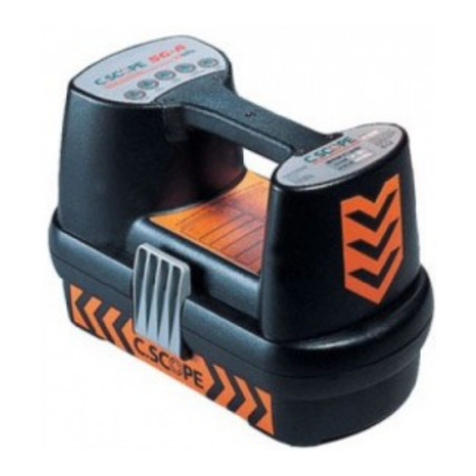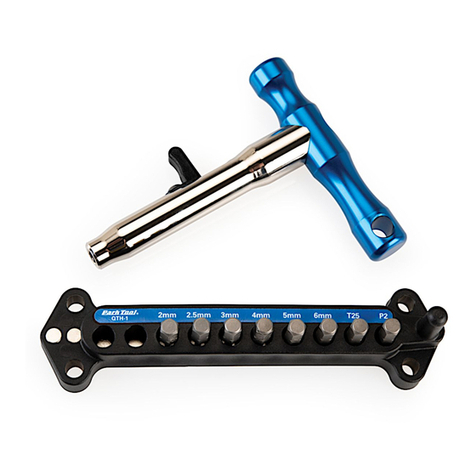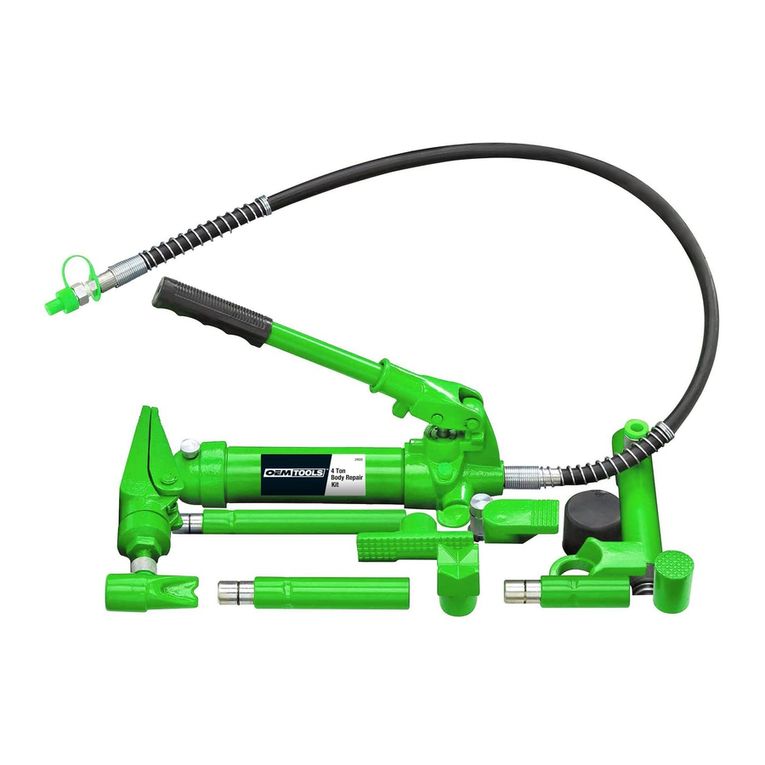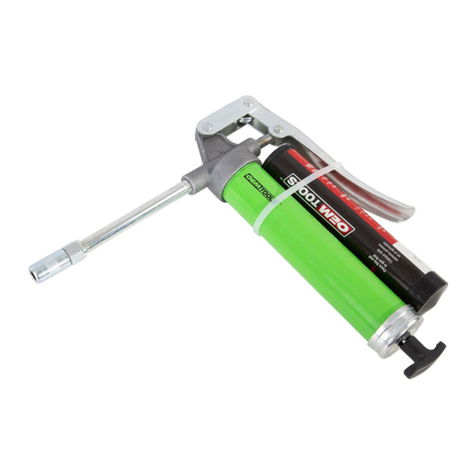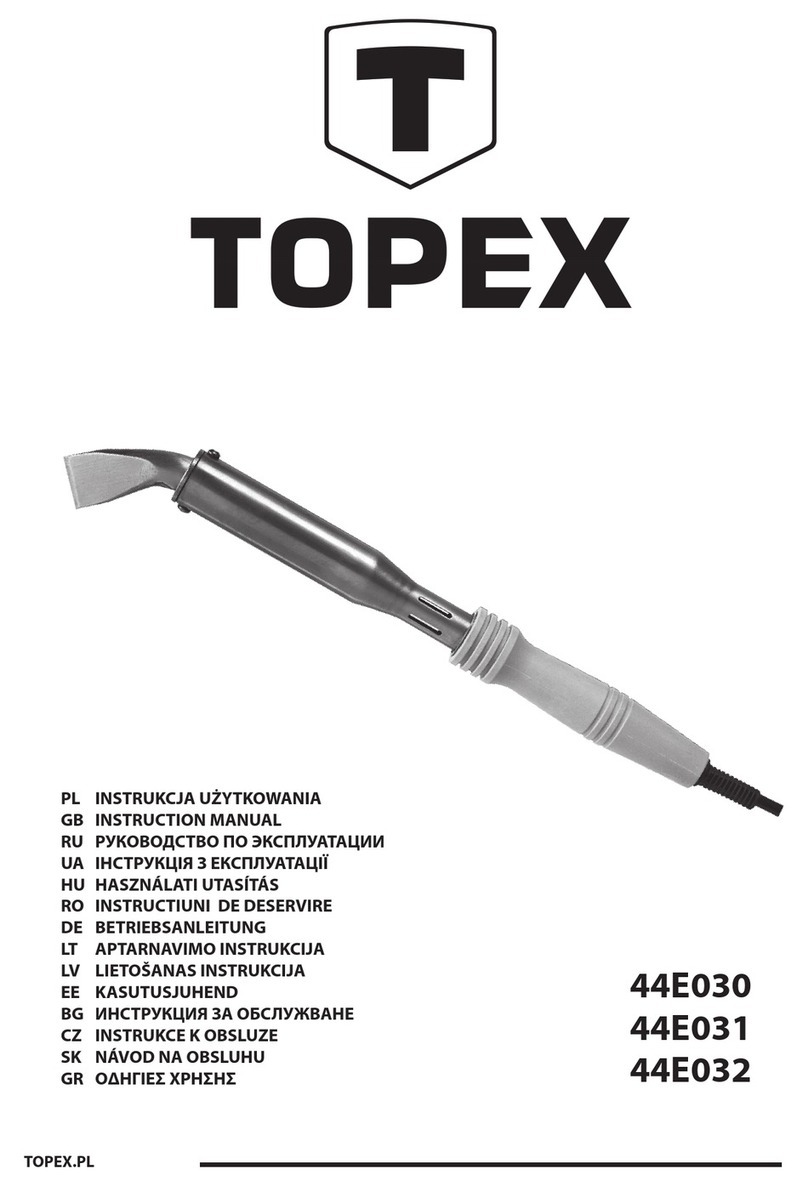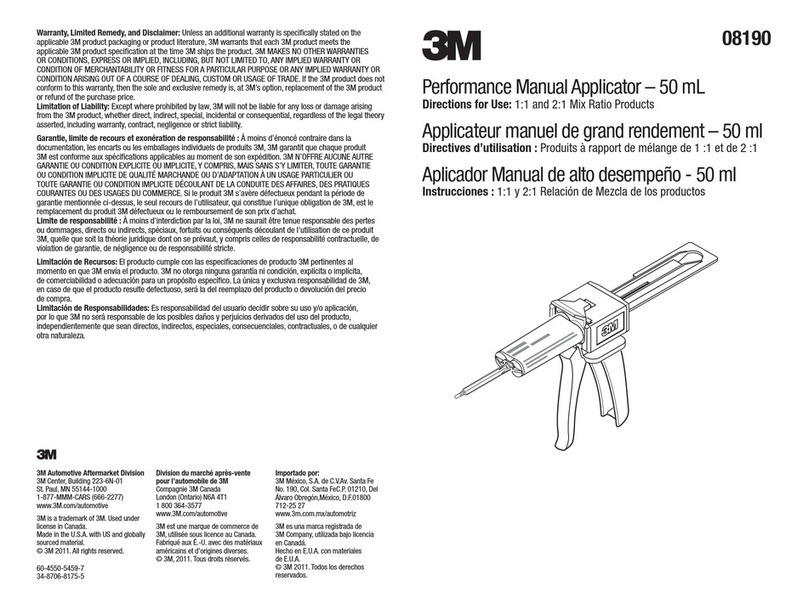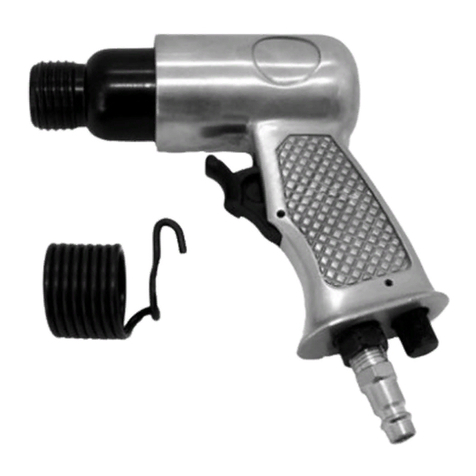Boston Scientific EMBLEM S-ICD User manual

USER’S MANUAL
EMBLEM™S-ICD
Subcutaneous Electrode Insertion Tool
Model 4711
CAUTION: Federal law (USA)
restricts this device to sale by
or on the order of a physician
trained or experienced in
device implant and follow-up
procedures.


The following are trademarks of Boston Scientific Corporation or its affiliates:
EMBLEM.


Table of Contents
Description......................................................................................................................................1
Related Information.........................................................................................................................1
Indications for Use ..........................................................................................................................1
Contraindications ............................................................................................................................1
Warnings ........................................................................................................................................2
Precautions.....................................................................................................................................3
Potential Adverse Events ................................................................................................................4
Using the S-ICD System .................................................................................................................7
Surgical Preparation ..............................................................................................................7
Items Included in Package .....................................................................................................7
Implanting the S-ICD System .................................................................................................7
Creating the Device Pocket...............................................................................................8
Implanting the EMBLEM S-ICD Subcutaneous Electrode ..................................................9
EMBLEM S-ICD Subcutaneous Electrode Insertion Tool Diagram .................................................18
EMBLEM S-ICD Subcutaneous Electrode Insertion Tool
Specifications..................................................................................................................18
Definitions of Package Label Symbols...........................................................................................19
Warranty Disclaimer......................................................................................................................21


1
DESCRIPTION
The EMBLEM S-ICD subcutaneous electrode insertion tool (the "EIT") is a component of the Boston Scientific
S-ICD System, which is prescribed for patients when cardiac arrhythmia management is warranted. The EIT is
used to create a subcutaneous tunnel to facilitate implantation of the EMBLEM S-ICD subcutaneous electrode.
The EIT is also compatible with the Cameron Health Model 3010 Q-TRAK subcutaneous electrode.
RELATED INFORMATION
For additional information about other components of the S-ICD System, refer to the following:
• EMBLEM S-ICD Pulse Generator User’s Manual
• EMBLEM S-ICD Subcutaneous Electrode User’s Manual
• EMBLEM S-ICD Programmer User’s Manual
A summary of the S-ICD System Clinical Investigation, including observed adverse events, can be obtained by
contacting Boston Scientific using the information on the back cover.
INTENDED AUDIENCE
This literature is intended for use by professionals trained or experienced in device implant and/or follow-up
procedures.
INDICATIONS FOR USE
The S-ICD System is intended to provide defibrillation therapy for the treatment of life-threatening ventricular
tachyarrhythmias in patients who do not have symptomatic bradycardia, incessant ventricular tachycardia, or
spontaneous, frequently recurring ventricular tachycardia that is reliably terminated with antitachycardia pacing.
CONTRAINDICATIONS
Unipolar pacing and impedance-based features are contraindicated for use with the S-ICD System.

2
WARNINGS
NOTE: Before using the S-ICD System, read and follow all warnings and precautions provided in the
EMBLEM S-ICD Pulse Generator User’s Manual.
General
•Labeling knowledge. Read this manual thoroughly before using the S-ICD System to avoid damage to
the pulse generator and/or subcutaneous electrode. Such damage can result in patient injury or death.
•For single patient use only. Do not reuse, reprocess, or resterilize. Reuse, reprocessing, or resterilization
may compromise the structural integrity of the device and/or lead to device failure which, in turn, may result
in patient injury, illness, or death. Reuse, reprocessing, or resterilization may also create a risk of
contamination of the device and/or cause patient infection or cross-infection, including, but not limited to,
the transmission of infectious disease(s) from one patient to another. Contamination of the device may lead
to injury, illness, or death of the patient.
•Component compatibility. All Boston Scientific S-ICD implantable components are designed for use with
the Boston Scientific or Cameron Health S-ICD System only. Connection of any S-ICD System
components to a non-compatible component will result in failure to deliver life-saving defibrillation therapy.
•Backup defibrillation protection. Always have external defibrillation equipment and medical personnel
skilled in CPR available during implant and follow-up testing. If not terminated in a timely fashion, an
induced ventricular tachyarrhythmia can result in the patient’s death.
Handling
•Proper handling. Handle the components of the S-ICD System with care at all times and maintain proper
sterile technique. Failure to do so may lead to injury, illness, or death of the patient.
•Do not damage components. Do not modify, cut, kink, crush, stretch, or otherwise damage any
component of the S-ICD System. Impairment to the S-ICD System may result in an inappropriate shock or
failure to deliver therapy to the patient.

3
•Handling the subcutaneous electrode. Use caution handling the subcutaneous electrode connector. Do
not directly contact the connector with any surgical instruments such as forceps, hemostats, or clamps.
This could damage the connector. A damaged connector may result in compromised sealing integrity,
possibly leading to compromised sensing, loss of therapy, or inappropriate therapy.
Implantation
•System dislodgement. Use appropriate anchoring techniques as described in the implant procedure to
prevent S-ICD System dislodgement and/or migration. Dislodgement and/or migration of the S-ICD
System may result in an inappropriate shock or failure to deliver therapy to the patient.
PRECAUTIONS
Clinical Considerations
•Pediatric use. The S-ICD System has not been evaluated for pediatric use.
•Available therapies. The S-ICD System does not provide long-term bradycardia pacing, cardiac
resynchronization therapy (CRT), or antitachycardia pacing (ATP).
Sterilization and Storage
•If package is damaged. The electrode insertion tool is sterilized with gamma irradiation and is packaged
in a sterile container. When the electrode insertion tool is received, it is sterile provided the container is
intact. If the packaging is wet, punctured, opened, or otherwise damaged, return the electrode insertion
tool to Boston Scientific.
•Use by date. Use the electrode insertion tool before or on the USE BY date on the package label because
this date reflects a validated shelf life. For example, if the date is January 1, do not use on or after January
2.
•Storage temperature. The recommended storage temperature range is -18°C to +55°C (0°F to +131°F).

4
Implantation
•Creating the subcutaneous tunnel. Use the electrode insertion tool to create the subcutaneous tunnel
when implanting and positioning the subcutaneous electrode. Avoid tunneling close to any other
subcutaneously implanted medical devices or components, for example, an implantable insulin pump, drug
pump, or ventricular assist device.
•Superior tunnel length. Ensure the superior tunnel is long enough to accommodate the portion of the
electrode from the distal tip to the suture sleeve without buckling or curving of the defibrillation coil.
Buckling or curvature of the defibrillation coil within the superior tunnel could lead to compromised sensing
and/or therapy delivery. After insertion of the electrode into the superior tunnel, X-ray or fluoroscopy may
be used to confirm that no buckling or curvature is observed.
•Suture location. Suture only those areas indicated in the implant instructions.
•Do not suture directly over subcutaneous electrode body. Do not suture directly over the
subcutaneous electrode body, as this may cause structural damage. Use the suture sleeve to prevent
subcutaneous electrode movement.
•Sternal wires. When implanting the S-ICD system in a patient with sternal wires, ensure that there is no
contact between the sternal wires and the distal and proximal sense electrodes (for example, by using
fluoroscopy). Compromised sensing can occur if metal-to-metal contact occurs between a sense electrode
and a sternal wire. If necessary, re-tunnel the electrode to ensure sufficient separation between the sense
electrodes and the sternal wires.
POTENTIAL ADVERSE EVENTS
Potential adverse events related to implantation of the S-ICD System may include, but are not limited to, the
following:
• Acceleration/induction of atrial or ventricular arrhythmia
• Adverse reaction to induction testing

5
• Allergic/adverse reaction to system or medication
• Bleeding
• Conductor fracture
• Cyst formation
• Death
• Delayed therapy delivery
• Discomfort or prolonged healing of incision
• Electrode deformation and/or breakage
• Electrode insulation failure
• Erosion/extrusion
• Failure to deliver therapy
• Fever
• Hematoma/seroma
• Hemothorax
• Improper electrode connection to the device
• Inability to communicate with the device
• Inability to defibrillate or pace
• Inappropriate post-shock pacing
• Inappropriate shock delivery
• Infection

6
• Keloid formation
• Migration or dislodgement
• Muscle/nerve stimulation
• Nerve damage
• Pneumothorax
• Post-shock/post-pace discomfort
• Premature battery depletion
• Random component failures
• Stroke
• Subcutaneous emphysema
• Surgical revision or replacement of the system
• Syncope
• Tissue redness, irritation, numbness or necrosis
If any adverse events occur, invasive corrective action and/or S-ICD System modification or removal may be
required.
Patients who receive an S-ICD System may develop psychological disorders that include, but are not limited to,
the following:
• Depression/anxiety
• Fear of device malfunction
• Fear of shocks

7
• Phantom shocks
USING THE S-ICD SYSTEM
Surgical Preparation
Consider the following prior to the implantation procedure:
The S-ICD System is designed to be positioned using anatomical landmarks. However, it is recommended to
review a pre-implant chest x-ray in order to confirm that a patient does not have notably atypical anatomy (e.g.,
dextrocardia). Consider marking the intended position of the implanted system components and/or incisions
prior to the procedure, utilizing anatomical landmarks or fluoroscopy as a guide. Additionally, if deviations from
the implant instructions are required to accommodate for physical body size or habitus, it is recommended that
a pre-implant chest x-ray has been reviewed.
Items Included in Package
Store in a clean, dry area. The following items are included with the subcutaneous electrode insertion tool:
• Product literature
Implanting the S-ICD System
This section presents the information necessary for implanting the subcutaneous electrode using the
subcutaneous electrode insertion tool (the “EIT”).
WARNING: All Boston Scientific S-ICD implantable components are designed for use with the Boston
Scientific or Cameron Health S-ICD System only. Connection of any S-ICD System components to a non-
compatible component will result in failure to deliver life-saving defibrillation therapy.
The device and subcutaneous electrode are typically implanted subcutaneously in the left thoracic region
(Figure 1 Placement of the S-ICD System (Model 3501 Electrode shown) on page 8). The EIT is used to create
the subcutaneous tunnels in which the electrode is inserted.

8
Figure 1. Placement of the S-ICD System (Model 3501 Electrode shown)
Creating the Device Pocket
The device is implanted in the left lateral thoracic region. To create the device pocket, make an incision such
that the device can be placed in the vicinity of the left 5th and 6th intercostal spaces and near the mid-axillary

9
line (Figure 2 Creating the Device Pocket on page 9) and secured to the fascial plane covering the serratus
muscle. This can be accomplished by making an incision along the inframammary crease.
Figure 2. Creating the Device Pocket
Implanting the EMBLEM S-ICD Subcutaneous Electrode
The procedure described below is one of several surgical approaches that can be used to appropriately implant
and position the electrode. Alternate surgical approaches could be considered if system placement
requirements can be achieved. Regardless of the surgical approach, the defibrillation coil must be positioned
parallel to the sternum, in close proximity to, or in contact with the deep fascia, below adipose tissue,
approximately 1-2 cm from the sternal midline (Figure 1 Placement of the S-ICD System (Model 3501 Electrode
shown) on page 8). In addition, good tissue contact with the electrode and pulse generator is important to
optimize sensing and therapy delivery. Use standard surgical techniques to obtain good tissue contact. For
example, keep the tissue moist and flushed with sterile saline, express any residual air out through the incisions
prior to closing and, when closing the skin, take care not to introduce air into the subcutaneous tissue.

10
1. Make a small, 2 cm horizontal incision at the xiphoid process (xiphoid incision). The size and orientation
may vary at the physician’s discretion based on the patient’s body habitus.
NOTE: If desired, in order to facilitate attachment of the suture sleeve to the fascia following electrode
placement, two suture ties to the fascia can be made at the xiphoid incision prior to continuing.
2. Insert the distal tip of the EIT at the xiphoid incision and tunnel laterally until the distal tip emerges at the
device pocket.
CAUTION: Use the electrode insertion tool to create the subcutaneous tunnel when implanting and
positioning the subcutaneous electrode. Avoid tunneling close to any other subcutaneously implanted medical
devices or components, for example, an implantable insulin pump, drug pump, or ventricular assist device.

12
4. With the subcutaneous electrode attached, carefully pull the EIT back through the tunnel to the xiphoid
incision until the proximal sensing electrode emerges.
5. If using S-ICD Subcutaneous Electrode Model 3401, place a suture sleeve over the subcutaneous
electrode shaft 1 cm below the proximal sensing electrode. Using the preformed grooves, bind the suture
sleeve to the subcutaneous electrode shaft using 2-0 silk or similar non-absorbable suture material,
making sure not to cover the proximal sensing electrode. After the suture sleeve is attached to the
electrode body, check that it is stable by grasping the suture sleeve with fingers and trying to slide it along
the subcutaneous electrode body in either direction.
If using S-ICD Subcutaneous Electrode Model 3501, a suture sleeve is permanently affixed
(integrated) to the electrode body. If the accessory slit suture sleeve is needed in addition to the integrated
suture sleeve, attach it to the electrode body as follows: Using the preformed grooves, bind the suture
sleeve to the subcutaneous electrode shaft using 2-0 silk or similar non-absorbable suture material,
making sure not to cover the integrated suture sleeve, sensing electrodes, or defibrillation coil. After the
suture sleeve is attached to the electrode body, check that it is stable by grasping the suture sleeve with
fingers and trying to slide it along the subcutaneous electrode body in either direction.
NOTE: Do not anchor the subcutaneous electrode to the fascia until electrode placement is complete.

13
6. Make a second incision approximately 14 cm superior to the xiphoid incision (superior incision). If desired,
place the exposed subcutaneous electrode on the skin to make this measurement. The distance between
the superior and xiphoid incisions must accommodate the portion of the subcutaneous electrode from the
distal sensing electrode to the proximal sensing electrode. Pre-place one or two fascial sutures in superior
incision. Use a non-absorbable suture material of appropriate size for long-term retention. Apply gentle
traction to ensure adequate tissue fixation. Retain the needle on the suture for later use in passing
through the electrode anchoring hole.
7. Insert the distal tip of the EIT into the xiphoid incision between the adipose and fascial plane and tunnel
subcutaneously towards the superior incision, staying below adipose tissue and as close to the deep
fascia as possible (Figure 4 Tunneling to Superior Incision on page 14).
CAUTION: Ensure the superior tunnel is long enough to accommodate the portion of the electrode from the
distal tip to the suture sleeve without buckling or curving of the defibrillation coil. Buckling or curvature of the
defibrillation coil within the superior tunnel could lead to compromised sensing and/or therapy delivery. After
insertion of the electrode into the superior tunnel, X-ray or fluoroscopy may be used to confirm that no buckling
or curvature is observed.

14
Figure 4. Tunneling to Superior Incision
Other manuals for EMBLEM S-ICD
4
Table of contents
Popular Tools manuals by other brands

BEA
BEA 97/16-407 USA Spare parts list/service instructions
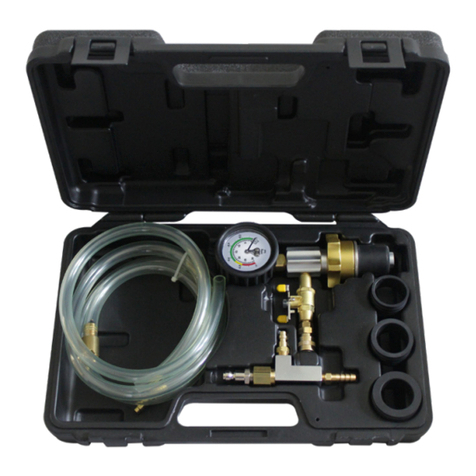
Master cool
Master cool 43012 manual

Welbilt
Welbilt 483700 owner's manual
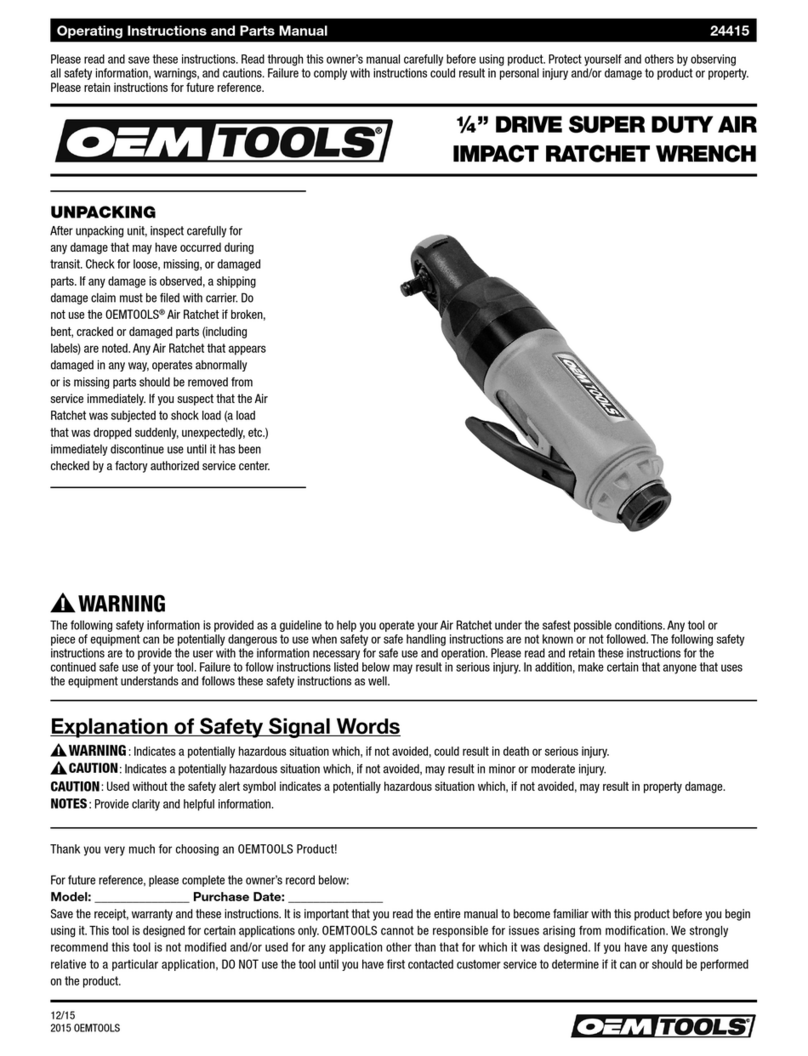
OEM Tools
OEM Tools 24415 Operating instructions and parts manual
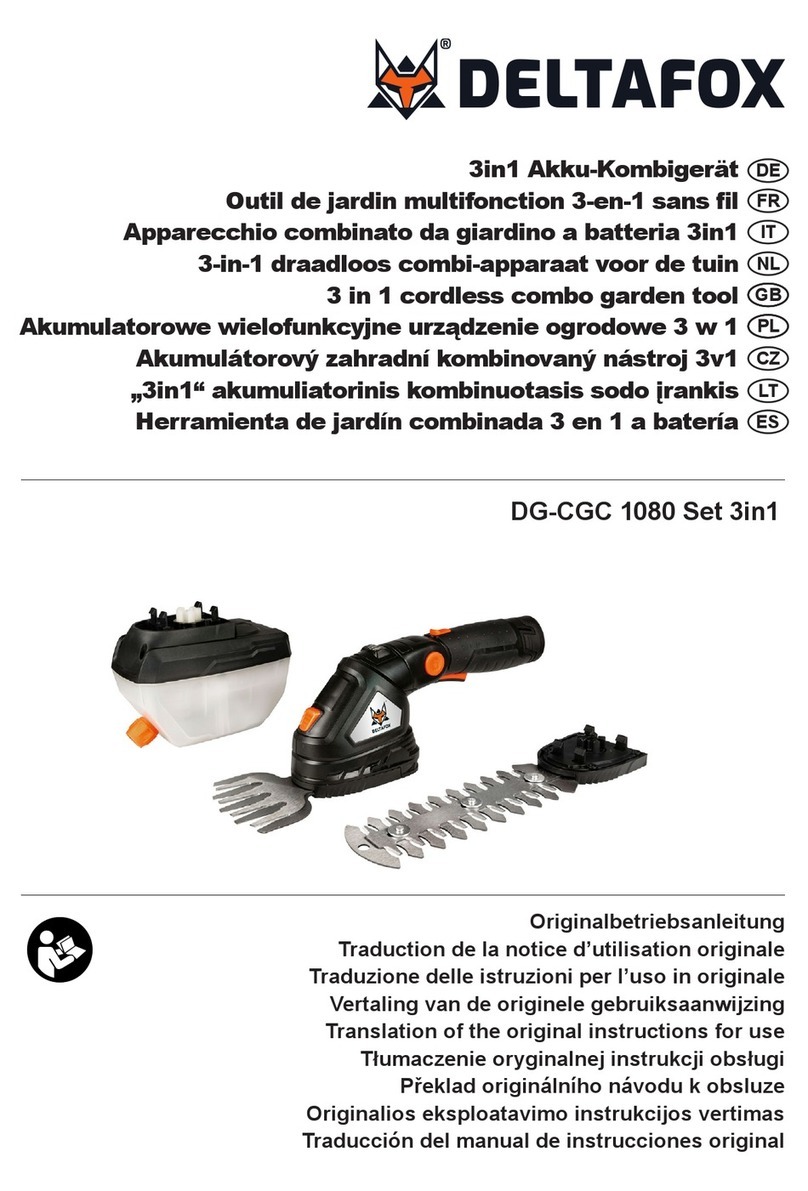
Deltafox
Deltafox DG-CGC 1080 Set 3in1 Translation of the original instructions for use
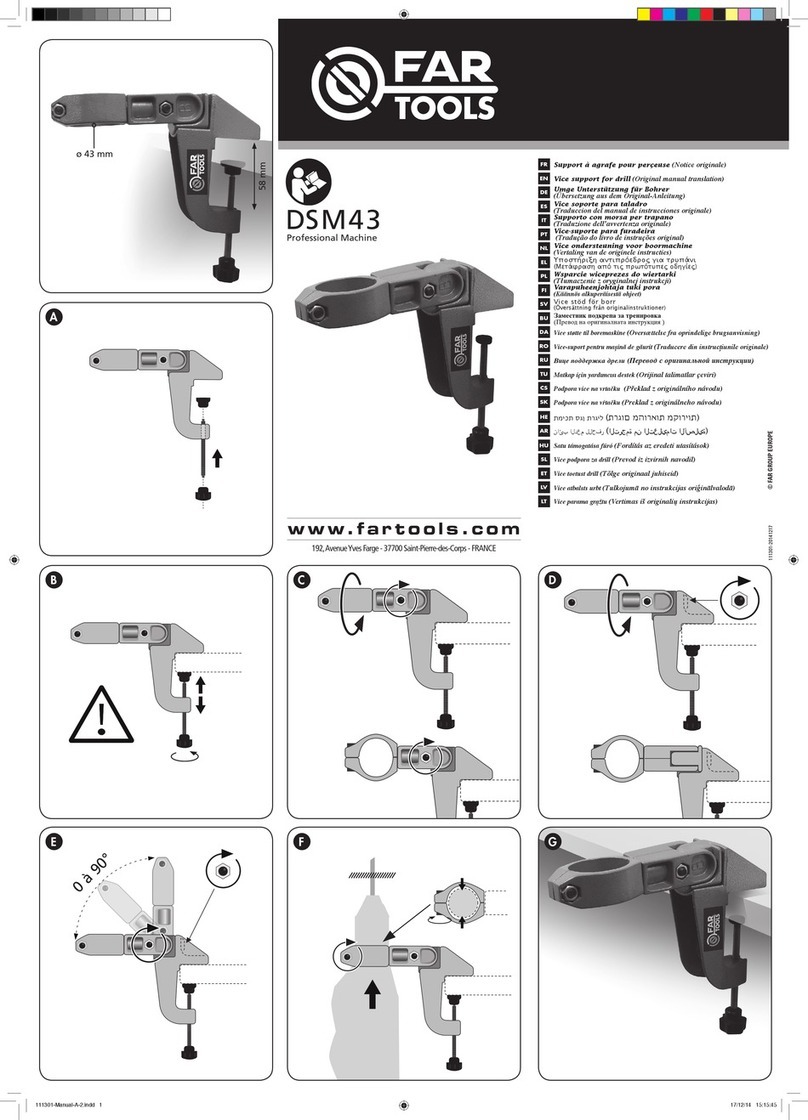
Far Tools
Far Tools DSM43 quick start guide


